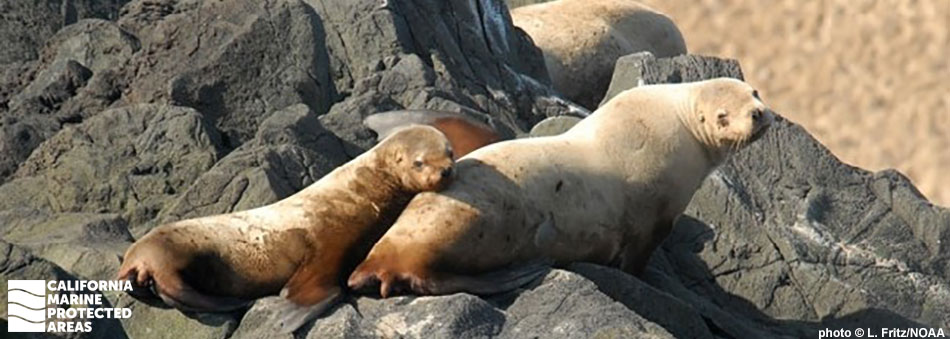
Overview
Located five miles northwest of Crescent City in Del Norte County, Southwest Seal Rock Special Closure is an offshore protected area that surrounds a small, rocky pinnacle. The special closure is especially important to Steller sea lions, who rest and give birth to pups on the remote, stony shore.
This special closure extends 300 feet seaward from any point around the entire rock, and vessels are restricted from passing through or dropping anchor. People are not allowed in the special closure, to protect the sea lions that use Southwest Seal Rock as a rookery. The nearby waters are filled with Dungeness crab, rockfish, lingcod, halibut, and salmon. Gray whales pass through the area on their 12,000-mile migration from Alaska to Baja, California. The adjacent shoreline is home to Tolowa Dunes State Park, which includes wetlands, forests, lakes, and stretches of sandy beach.
Regulations
Boating and access are restricted. Except as permitted by federal law or emergency caused by hazardous weather, no vessel shall be operated or anchored at any time from the mean high tide line to a distance of 300 ft. seaward of the mean lower low tide line of any shoreline of Southwest Seal Rock, year round.
No person except employees of the California Department of Fish and Wildlife, United States Fish and Wildlife Service, National Oceanic and Atmospheric Administration, or United States Coast Guard during performance of their official duties, or unless permission is granted by the California Department of Fish and Wildlife, shall enter the area.
California Code of Regulations Title 14, Section 632(b)(3)(opens in new tab)
Quick Facts
Special Closure size: 0.02 square miles
Depth range: 0 to 93 feet
Habitat composition*:
- Rock: 0.04 square miles
- Sand/mud: Less than 0.01 square miles
*Habitat calculations are based on three-dimensional area and may exceed the total MPA area listed above.